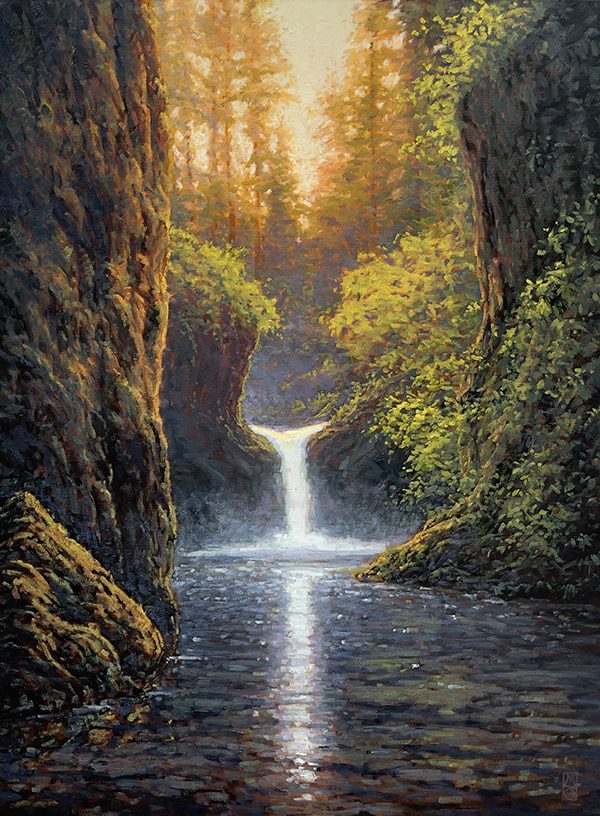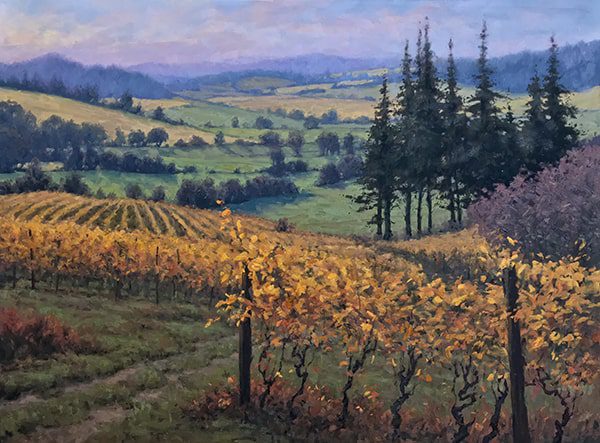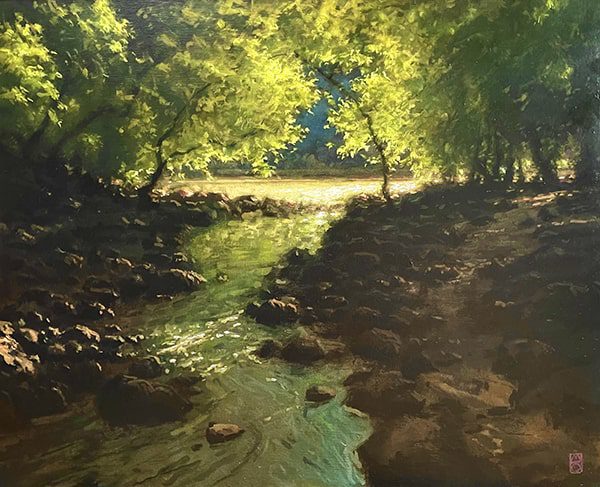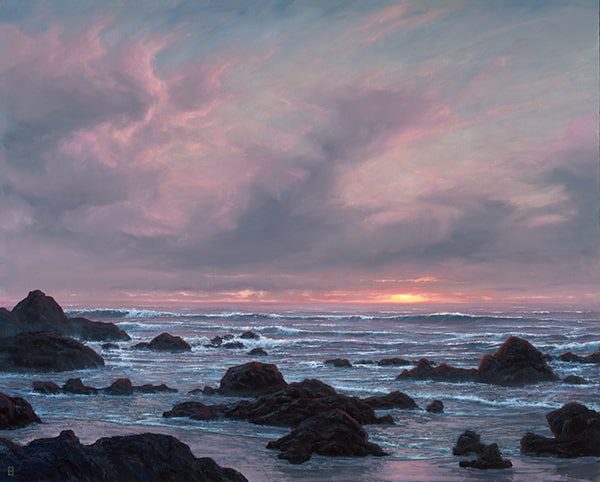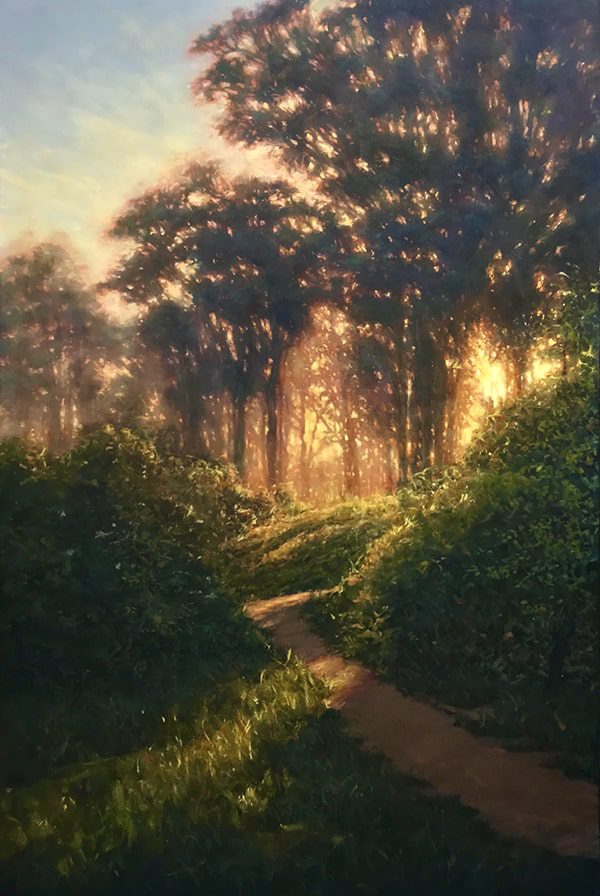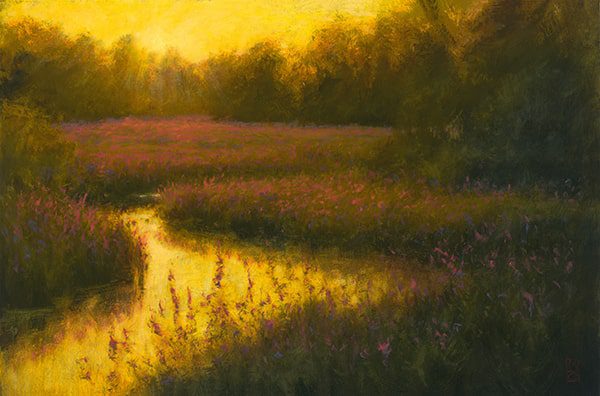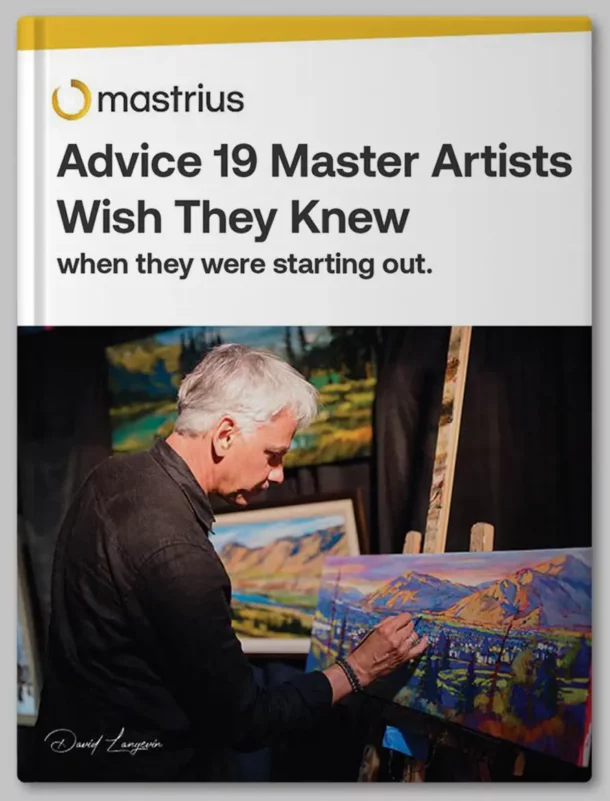
LIVE COURSE
Tonalism: Mystery, Memory & Imagination
Instructor: Michael Orwick
Audience: Fine Art Painters
Medium: Acrylic, Oil
Stage: Aspiring, Emerging
Saturday & Sunday, November 2 & 3, 2024
One Weekend
11:00 am – 5:30 pm MDT (includes 30-minute break)
$386.00
Note: Price in $USD
Out of stock
All recordings are available for 1-month after the course finishes.
![]() High School, University, and College students get 20% off!
High School, University, and College students get 20% off!
See FAQs at the bottom of this page for details.
Course Description
Bring emotion and atmosphere to your artwork with Michael Orwick’s masterful TONALISM techniques. In this 2-day online, live and interactive class, join Michael Orwick, an award-winning artist renowned for his mastery of capturing light and shadow’s subtle interplay.
For OIL and ACRYLIC painters, this course will guide you through creating ethereal landscapes using TONALISM TECHNIQUES.
You Will Learn:
- COMPOSITION & VALUE: Learn how to orchestrate visual elements to create harmony and depth.
- DESIGN PRINCIPLES: Learn the framework that underpins visually compelling art
- TONAL COLOR PALETTES: Explore the nuanced spectrum of hues to convey mood and time of day.
- Experience a Blend of Learning Methods: Informal Lectures: Gain insights into the Tonalist movement and its HISTORICAL significance.
- Live Demonstrations: Watch Michael’s technique in real- time DEMOS, revealing the secrets to his evocative landscapes.
- Personalized Guidance: Benefit from collective wisdom and individual mentorship to refine YOUR ARTISTIC VOICE.
Supply List
CANVAS AND PAINTING SURFACES
For learning, cheap boards and canvas panels are just fine 8×10 and 11×14 are two good sizes to start with. Stretched canvases are fine in the studio, for outdoors I prefer painting on panels. OIL or ACRYLIC
PAINT COLORS Please feel free to bring what you like and can get easily.
- REDS
- Quinacridone Red (PV 19) or Quinacridone Violet (PV 19)
- Transparent red-violet Cadmium Red Light (PR 108)
- Opaque orange-red or Napthol Scarlet (PR9)
- BLUES
- Ultramarine Blue (PB 29) – Transparent blue-violet Manganese Blue (preferred) or Cerulean Blue (PB 36:1) – Opaque blue-green
- YELLOWS
- Cadmium Yellow Light or Hansa Yellow or Lemon Yellow (PY 35)
- Semi-transparent green-yellow Cadmium Yellow Medium or deep (PY 37)
- Opaque orange-yellow or/and Indian Yellow (HR 70) – A very transparent orange-yellow.
- WHITE
- Titanium White Opaque (PW 6) – A cool white
- EXTRA COLORS
- Bring a tube of both black & white acrylic – even for oil painters!
- Indian Yellow (HR 70) – A very transparent orange- yellow. I like Gamblin paints for this color.
- Transparent Earth Red – A truly transparent version of Venetian Red. Excellent for glazing.
- A Black of your choice (I usually mix mine) or Paynes Gray which is a nice dark blue heart black
BRUSHES
- I like Chungking Hog Bristle brushes for their strength and durability.
- I buy mostly flats in sizes 6, 8, 10, and 12 with one smaller size like 2 for detail work. I use these brushes for the whole painting.
MEDIUMS FOR OILS (FOR ACRYLICS, BRING YOUR FAVORITE)
- Gamblin’s GAMSOL Odorless Mineral Spirits for painting and cleaning.
- Gamblin’s Galkyd Medium (I like the Gel Medium) to speed up drying time to as fast as 24 hours.
- Galkyd also makes a fantastic glazing medium.
OTHER SUPPLIES
- Paper towels
- A Round Point Painting knife, sometimes called a Spatula or Palette knife, for mixing colors and occasionally for painting.
- I like to mix my paints on a glass surface, but almost any palette can work.
- When the painting is dry and ready to hang – I varnish with Gamblin’s Gamvar Picture Varnish.
Instructor Bio
I was born in 1975 on a sunny day in Astoria Oregon. Despite my near death experience at birth, my Mom thought I was perfect. My Dad, a physician, knew better. These assessments continue today.
Within days of my recovery, my adventures began. Our small family moved to the Olympic Peninsula to live on the Quinault Indian Reservation as Dad served in the Indian Health Service. Most of my memories from those very early years revolve around an ancient Indian woman known as Gram Black, eating live clams on cold foggy beaches, and our performing circus poodle.
From there, our family moved to Boise, Idaho, where my parents got me a Golden Retriever who taught me the joy of peeing outside. It was also during this time that my sister, born in Columbia, S.A., was adopted into our family. I give her credit for teaching me patience and proper grooming.
At the age of four, I became the seventh generation on my mother’s side to live in “the town that friendliness built” and the home of the world’s largest strawberry shortcake, Lebanon, Oregon. Over the years, my family created an odd animal sanctuary and hobby farm with a revolving cast of colorful creatures to ride, observe, and endlessly scoop up after. My bedroom was in the tack room, which I shared with my youngest sister’s goat.
Very early my parents realized that I had dyslexia and that I saw things differently from most. School was difficult, but in hindsight, this was one of many blessings that have helped to shape my artful existence. I was lucky to grow up surrounded by beautiful creeks and evergreen wilderness and within a family that loved to travel, encouraged curiosity, and following one’s heart. And my heart has always told me to create.
LIVE COURSE FAQ
How many registrations are required for a course to start?
A minimum of 8 registrations are required. If 8 registrations are not received by the time the course is 24 hours from starting, the course will be cancelled and all registrants will receive complete refunds.
What is the maximum number of people in a course?
This varies for each course. The maximum number of registrations is decided by the instructor.
Can I get a refund?
Up until 72 hours before a course’s first session you can receive a complete refund. You can cancel your registration via the My Account portal, or by contacting [email protected].
After this time no refunds will be given (if you have extenuating circumstances you believe justify a refund, contact us at [email protected]).
Can I register for a course already in progress?
No. Once a course has started, no new registrations are accepted.
Where will my course be held?
All courses meet online over Zoom. You will need a device equipped with a camera and a microphone to fully participate.
If you have not used Zoom before, learn about how to use it here.
If you don’t regularly use Zoom, we recommend you join your first session 10-15 minutes early in case your computer needs to install or update Zoom.
How do I join my course?
You will receive a welcome email from [email protected] when you register. This email includes the Zoom link to join your course session. You will also receive 24 hour and 2 hour reminder emails before each session, and each of these emails includes the Zoom link. You can also access the Zoom link to join your course in your MastriusChat group.
Are the sessions recorded?
Yes, every session is recorded and are typically available 24 hours after a session ends. All session recordings will remain available for the duration of the course, and for one month following the last session. The recordings are viewable within the MastriusChat platform, and cannot be downloaded.
What if I miss a session?
You’ll be able to watch the session’s recording. If you have questions the recording doesn’t address, you can ask them in the chat feed of your course’s private MastriusChat group.
What is MastriusChat?
MastriusChat is an online discussion platform. You and your fellow course registrants will be assigned to a private MastriusChat group where you can connect and support eachother via the chat “feed”. Your group is also where you’ll access the session recordings. Other resources in your MastriusChat group include a link to join your course sessions, and a library your instructor can use to share resources.
What is a Navigator?
A Navigator is an artist who joins your course to ensure both instructor and registrants have an enjoyable experience. They support (as required) with technology, timekeeping, moderating questions, and between-session discussions on MastriusChat. The Navigator has also joined the course as participant, and just like you, they’re wanting to grow their skills and learn the material.
I’m not ready to register because I still have questions. Who do I contact?
We’d be happy to help!
Reach out to us at [email protected] and we’ll do our best to support you.
Get the STUDENT DISCOUNT
High School, University, and College students get 20% off ANY course (non-member price).
To claim this discount email [email protected] to enroll in the Student Program.

